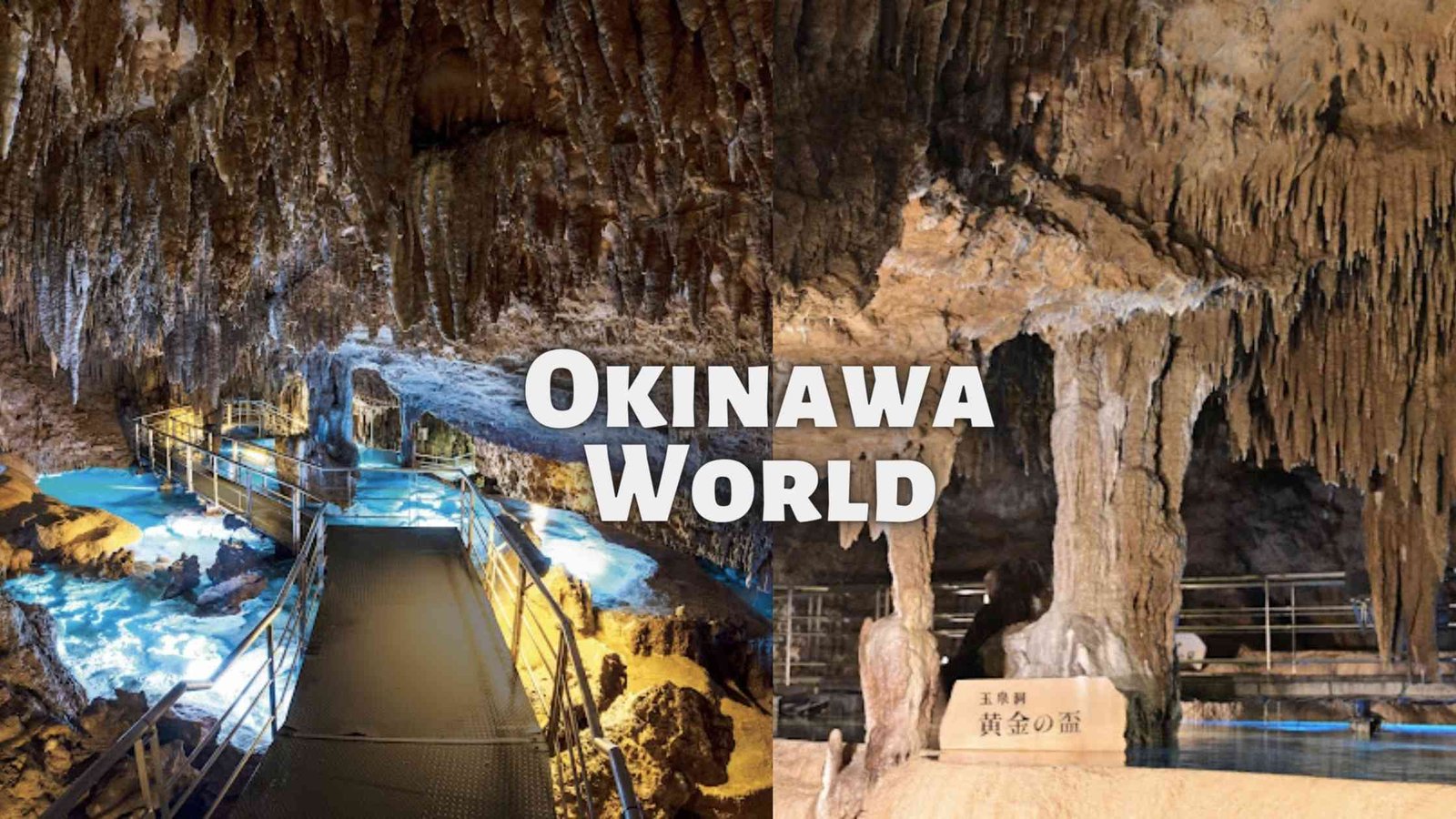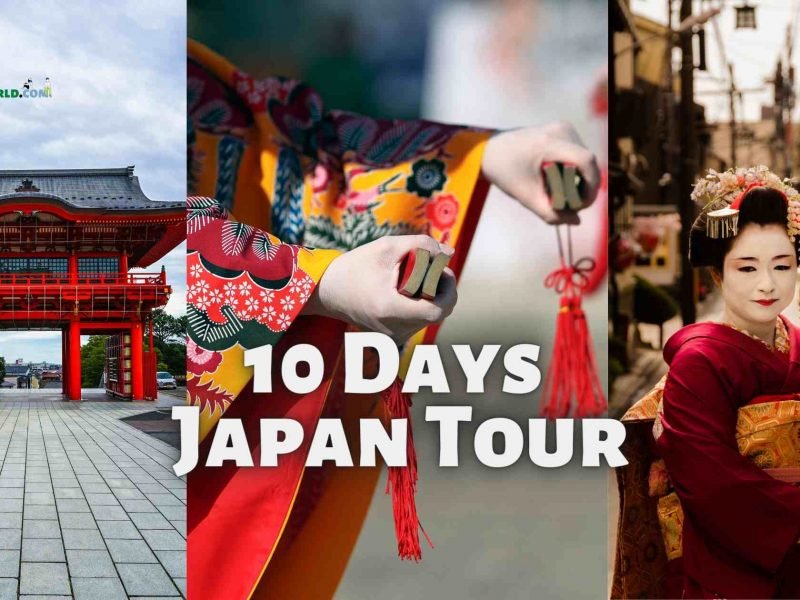About Okinawa World
The theme park known as Okinawa World may be found in the southern region of Okinawa Island, which is in Japan. It provides a number of attractions, such as the Gyokusendo Cave, a traditional Okinawan village, a Habu museum, and a snake show, in addition to stores and restaurants that showcase local crafts and cuisine. Other attractions include the Gyokusendo Cave. The park is well-known for preserving and promoting Okinawan culture and tradition, and it is a popular tourist destination in the surrounding area.
- he park is located in Nanjō city, which is about a 40-minute drive from Naha, the capital city of Okinawa.
- The main attraction of the park is the Gyokusendo Cave, which is one of the largest limestone caves in Japan. Visitors can take a guided tour of the cave, which has a total length of about 5 kilometers (3.1 miles).
- The traditional Okinawan village within the park is called “Habu no Sato”. It features various types of traditional houses and buildings, as well as workshops where visitors can learn about traditional crafts such as pottery, dyeing, and weaving.
- The park also has a museum dedicated to the habu, a venomous snake that is native to Okinawa. Visitors can learn about the biology and habits of the habu, as well as the history of its interactions with humans in Okinawa.
- The snake show is a popular attraction within the park, featuring performances by handlers who demonstrate how to handle and control various types of snakes, including the habu.
- Other attractions in the park include a butterfly garden, a traditional Okinawan theater, and a gift shop where visitors can purchase souvenirs and local products.
Overall, Okinawa World offers a diverse range of experiences that showcase Okinawa’s natural beauty, culture, and history, making it a popular destination for tourists and locals alike.

History timeline of Okinawa World
Here is a brief history timeline of Okinawa World:
- 1974: Okinawa World was established as a tourist attraction in Nanjō city, Okinawa.
- 1975: The Gyokusendo Cave was opened to the public for tours.
- 1976: The traditional Okinawan village “Habu no Sato” was established within the park.
- 1983: The Habu Museum and Snake Show were added to the park’s attractions.
- 1990: The park’s Ryūkyū Kingdom Theater was built, featuring traditional Okinawan dance and music performances.
- 1999: The park’s Butterfly Garden was opened to the public.
- 2001: The park’s Eisa Drum Dance Hall was built, featuring performances of the traditional Okinawan Eisa dance.
- 2012: Okinawa World underwent a major renovation and expansion, adding new attractions such as the Kingdom Craft Market and the Okinawan Traditional Crafts Center.
Today, Okinawa World remains a popular destination for tourists and locals who want to learn about and experience the unique culture and heritage of Okinawa.
How to reach Okinawa World
Okinawa World is located in the southern part of Okinawa Island, Japan. Here are some common ways to reach the park:
- By car: The easiest way to reach Okinawa World is by car. It takes about 40 minutes to drive from Naha, the capital city of Okinawa. The park has a large parking lot with plenty of spaces for visitors.
- By bus: It is also possible to reach Okinawa World by bus. Take bus number 83 from the Naha Bus Terminal to the Okinawa World Mae stop. The journey takes about an hour.
- By taxi: Taxis are available throughout Okinawa, and can be a convenient option for those who do not want to drive or take the bus. However, they can be quite expensive, especially for longer distances.
- By organized tour: There are also organized tours available that include transportation to and from Okinawa World, as well as admission to the park’s attractions. These tours can be a good option for those who want a hassle-free experience.
No matter how you choose to reach Okinawa World, be sure to check the park’s hours of operation and admission prices before you go.
Highlights of Okinawa World
- Gyokusendo Cave: The park’s main attraction is the Gyokusendo Cave, which is one of the largest limestone caves in Japan. Visitors can take a guided tour of the cave, which features stunning rock formations and underground streams.
- Habu no Sato: This traditional Okinawan village within the park features various types of traditional houses and buildings, as well as workshops where visitors can learn about traditional crafts such as pottery, dyeing, and weaving.
- Habu Museum and Snake Show: The park also has a museum dedicated to the habu, a venomous snake that is native to Okinawa. Visitors can learn about the biology and habits of the habu, as well as the history of its interactions with humans in Okinawa. There is also a popular snake show featuring performances by handlers who demonstrate how to handle and control various types of snakes, including the habu.
- Butterfly Garden: The park’s butterfly garden is home to dozens of species of butterflies, including the Okinawan endemic Papilio iswara.
- Eisa Drum Dance Hall: The Eisa Drum Dance Hall features performances of the traditional Okinawan Eisa dance, which is typically performed during the summer festival season.
- Okinawan Food and Crafts: The park has a variety of shops and restaurants where visitors can sample local Okinawan cuisine and purchase souvenirs and traditional crafts.
Do's and Dont's at Okinawa World
Here are some general do’s and don’ts to keep in mind when visiting Okinawa World:
Do’s:
- Do dress comfortably and wear comfortable shoes for walking around the park.
- Do bring sunscreen, a hat, and sunglasses to protect yourself from the sun.
- Do be respectful of the park’s cultural and historical significance, and follow the rules and regulations of the park.
- Do try the local Okinawan cuisine and traditional crafts available at the park.
- Do follow the instructions of park staff, especially during the animal shows and tours.
Don’ts:
- Don’t touch or disturb the wildlife or animals in the park, including the snakes at the Habu Museum.
- Don’t litter or leave trash in the park. There are plenty of trash cans throughout the park.
- Don’t bring outside food or drinks into the park, unless you have a medical condition that requires it.
- Don’t smoke in non-designated areas.
- Don’t touch or climb on any of the park’s cultural or historical artifacts or exhibits.
Overall, visitors should be respectful and considerate when visiting Okinawa World, and should follow the park’s guidelines to ensure a safe and enjoyable experience for everyone.






Comment (0)